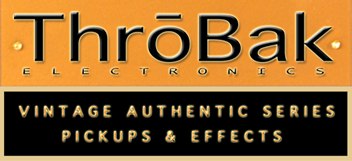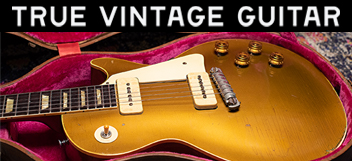-
THIS IS THE 25th ANNIVERSARY YEAR FOR THE LES PAUL FORUM! PLEASE CELEBRATE WITH US AND SUPPORT US WITH A DONATION TO KEEP US GOING! We've made a large financial investment to convert the Les Paul Forum to this new XenForo platform, and recently moved to a new hosting platform. We also have ongoing monthly operating expenses. THE "DONATIONS" TAB IS NOW WORKING, AND WE WOULD APPRECIATE ANY DONATIONS YOU CAN MAKE TO KEEP THE LES PAUL FORUM GOING! Thank you!
You are using an out of date browser. It may not display this or other websites correctly.
You should upgrade or use an alternative browser.
You should upgrade or use an alternative browser.
Gudeman's/ orientation to ground?
- Thread starter WildBill
- Start date
John Catto
Active member
- Joined
- Jul 15, 2001
- Messages
- 3,609
It's not a high voltage, high gain (ie. an amp) implementation so I doubt it would make a bit of difference. Putting the outer layers of the cap to earth MAY have some advantages re. rejection of noise but I doubt very much you'd hear them in a guitar usage.
I've done quite a bit of experimenting with this, and I can tell you that the orientation of the caps has a noticeable effect on the tone. The best way to test this is to remove the cap, run two alligator clip leads outside the guitar and connect the cap to the leads. Then have somebody flip the cap while you play. I think you'll hear a difference.
The bad news is that the outside foil marker on many old and most new caps is wrong. You need an oscilloscope to actually determine the outside foil. That's the main reason you'll get a lot of conflicting information about which way it should go from the "experts".
So for practical purposes, the alligator test makes more sense, because it gives you the orientation YOU like, regardless what the scope and the expert on cap orientation say you SHOULD like. Or it might tell you you can't hear a difference, in which case you have one less thing to worry about instead of playing the guitar. Let me know what you find. hogy
The bad news is that the outside foil marker on many old and most new caps is wrong. You need an oscilloscope to actually determine the outside foil. That's the main reason you'll get a lot of conflicting information about which way it should go from the "experts".
So for practical purposes, the alligator test makes more sense, because it gives you the orientation YOU like, regardless what the scope and the expert on cap orientation say you SHOULD like. Or it might tell you you can't hear a difference, in which case you have one less thing to worry about instead of playing the guitar. Let me know what you find. hogy
M
Mojojojo
Guest
Determining Outer Foil
I have a crude, easy way of determining outside foil:
1. Get yourself two clip leads
2. Turn your amp on and plug a guitar cord into the input.
3. Clip the one end of the leads to the tip and ring of the cord jack end that would normally connect to your guitar.
4. Clip the other end of the clip leads to the cap to be tested.
5. Here's the tricky part. You need to adjust the amp volume loud enough to hear what very well may be a subtle difference. You basically use your thumb and index finger to squeze the cap with, which will generate some noise. Reverse the clip leads and determine which orientation produces the least amount of induced noise. When you find which orientation is the quietest, the outer foil side of the cap will be the one connected to the clip lead which connects to the ring of the guitar cord.
You want the outer foil to connect to the low impedance part of the circuit, which will actually be toward the pickup, if I'm thinking about this correctly.
I have done this to all the signal caps I put into my last SLO amp build and it resulted in a very quiet amp. I have not tried this for guitar caps, though it would be an interesting experiment.
I have also seen that the smaller value caps are more difficult to distinguish which is the foil side (values less than .01, etc.)
I can't guarantee this will work for you as the noise in the environment may affect whether you can detect the differences, but if you like to play around with this kind of stuff, have at it!
I have a crude, easy way of determining outside foil:
1. Get yourself two clip leads
2. Turn your amp on and plug a guitar cord into the input.
3. Clip the one end of the leads to the tip and ring of the cord jack end that would normally connect to your guitar.
4. Clip the other end of the clip leads to the cap to be tested.
5. Here's the tricky part. You need to adjust the amp volume loud enough to hear what very well may be a subtle difference. You basically use your thumb and index finger to squeze the cap with, which will generate some noise. Reverse the clip leads and determine which orientation produces the least amount of induced noise. When you find which orientation is the quietest, the outer foil side of the cap will be the one connected to the clip lead which connects to the ring of the guitar cord.
You want the outer foil to connect to the low impedance part of the circuit, which will actually be toward the pickup, if I'm thinking about this correctly.
I have done this to all the signal caps I put into my last SLO amp build and it resulted in a very quiet amp. I have not tried this for guitar caps, though it would be an interesting experiment.
I have also seen that the smaller value caps are more difficult to distinguish which is the foil side (values less than .01, etc.)
I can't guarantee this will work for you as the noise in the environment may affect whether you can detect the differences, but if you like to play around with this kind of stuff, have at it!
Last edited:



